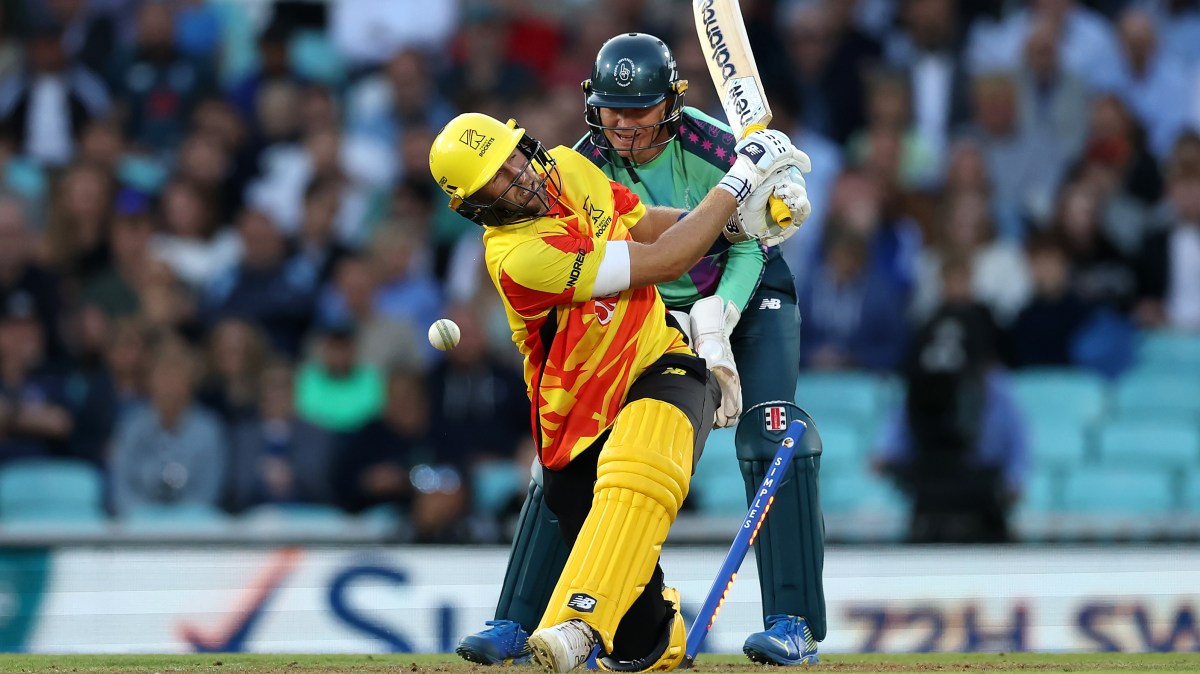Tournament insiders fear that a number of slow pitches are affecting the quality and entertainment of the Hundred and could risk the growth of the competition.
Organisers want to deliver a high-octane, high-scoring spectacle to attract new spectators and families to cricket, but there have been concerns this year about poor batting surfaces and a shortage of boundaries.
A lack of sixes in previous years was widely attributed to controversial tournament-branded balls, which had pronounced seams and large Hundred logos that helped to generate swing by weighing down one side. Those balls were ditched for this year’s competition in the hope of more boundaries, but a number of matches have now been hampered by slow and low surfaces.
The frustration is understood to have peaked after a match at Trent Bridge, singled out for being a “slow, turgid affair”. The fact that this particular fixture was one of the handful shown on free-to-air television on the BBC only amplified the concern that it did not showcase the tournament in its best light.

One Hundred match at Trent Bridge was described as being a “slow, turgid affair”
GEORGE WOOD – ECB/ECB VIA GETTY IMAGES
Sources have stressed that the issue is not a reflection of the efforts of groundstaff, who have faced considerable challenges, including a particularly dry summer and a heavy volume of cricket in the preceding months. However, it is understood that some teams have requested slower, turning pitches to suit the composition of their squads, raising a fundamental question for the tournament’s future.
This issue is felt to be particularly acute for the women’s tournament, which is inherently lower-scoring than the men’s. To encourage free-flowing batting, it is considered vital that the women’s matches are played on good pitches. As they are all double-headers played on the same wickets as the men’s games, a bigger picture is at play than simply what a men’s team might want to suit their own particular team make-up.
This issue has not escaped the notice of the ECB’s managing director of cricket, Rob Key. In a pointed observation on the Sky Sports Cricket podcast, he highlighted the nature of the pitches by drawing a parallel to the ECB’s efforts to prepare players for global conditions.
“We are trying to run spin camps, get some of our younger players and some of the main side, get spinners there [for them to face] and rough up the pitches because they’re not going to get those conditions [in county cricket],” Key remarked, before adding a telling barb: “Unless you play at Trent Bridge in the Hundred.”

The men and women share a pitch on any given day
CLIVE MASON/GETTY IMAGES
A critical discussion looms as the Hundred prepares to enter its next phase with private ownership of the eight franchises, in which Oval Invincibles will be renamed MI London, Manchester Originals will be called Manchester Super Giants and Northern Superchargers renamed Sunrisers Leeds.
With a significant influx of new money on the horizon, the ECB and the team owners are likely to convene over the winter to address the delicate balance between allowing for some degree of home advantage and ensuring groundstaff are empowered to prepare pitches with the pace, bounce and carry required for the high-octane cricket that the tournament needs to thrive and expand its appeal.

